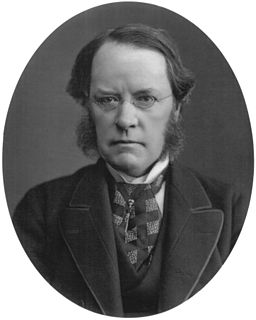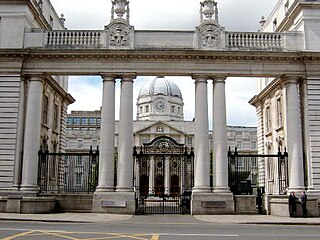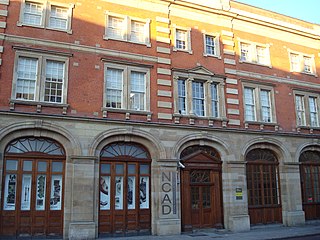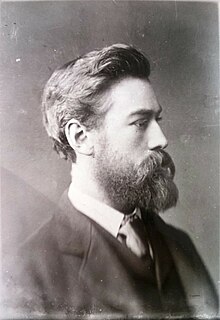This article needs additional citations for verification .(May 2021) |
The Science and Art Department was a British government body which functioned from 1853 to 1899, promoting education in art, science, technology and design in Britain and Ireland.
This article needs additional citations for verification .(May 2021) |
The Science and Art Department was a British government body which functioned from 1853 to 1899, promoting education in art, science, technology and design in Britain and Ireland.
The Science and Art Department was created as a subdivision of the Board of Trade in 1853, expanding the existing Department of Practical Art. Its first Superintendent was Henry Cole, and it supported not just science but also "practical arts" - i.e. technology and design. The Department benefited substantially from the Great Exhibition of 1851, part of the profits of which were distributed by the Commissioners of the Great Exhibition for educational purposes. That donation funded a large site in South Kensington accommodating the Science and Art Department, the South Kensington Museum, and other bodies. In 1856 the Science and Art Department was absorbed by a new Education Department, but retained considerable autonomy in promoting artistic and scientific higher education, especially for teacher training. [1]
The Science and Art Department took over the Government School of Design, founded in 1837, which became the National Art Training School in 1853, and finally in 1896 The Royal College of Art, under which name it still flourishes. It developed what became known as the South Kensington system in art education. The Headmaster until 1875 was Richard Burchett. On the science side it ran classes in South Kensington in the 1870s, which led directly to the formation of the Normal School of Science, a constituent college of Imperial College London. From 1859 the Science and Art Department had offered examinations for prospective science teachers, and promoted evening classes in science across Britain. From 1872 the Science and Art Department began offering scientific higher education directly through evening classes at the South Kensington site. In 1880 these classes acquired formal recognition as the Normal School of Science.
During the 1880s a number of Royal Commissions considered the question of technical education, and their recommendations led to an increasing role in scientific training for other branches of government. The increased attention paid to education led to the formation of the Board of Education in 1899, into which the Science and Art Department was fully integrated.
The Royal College of Science was a higher education institution located in South Kensington; it was a constituent college of Imperial College London from 1907 until it was wholly absorbed by Imperial in 2002. Still to this day, graduates from the Faculty of Natural Sciences at Imperial College London receive an Associateship to the Royal College of Science. Organisations linked with the college include the Royal College of Science Union and the Royal College of Science Association.

Lyon Playfair, 1st Baron Playfair was a British scientist and Liberal politician who was Postmaster-General from 1873 to 1874.

The Royal College of Art (RCA) is a public research university in London, United Kingdom, with campuses in South Kensington, Battersea and White City. It is the only entirely postgraduate art and design university in the United Kingdom. It offers postgraduate degrees in art and design to students from over 60 countries.
The City and Guilds of London Institute is an educational organisation in the United Kingdom. Founded on 11 November 1878 by the City of London and 16 livery companies – to develop a national system of technical education, the Institute has been operating under Royal Charter (RC117), granted by Queen Victoria, since 1900. The Prince of Wales, later King Edward VII, was appointed the first President of the Institute.

Sir Henry Cole FRSA was a British civil servant and inventor who facilitated many innovations in commerce and education in the 19th century in the United Kingdom. Cole is credited with devising the concept of sending greetings cards at Christmas time, introducing the world's first commercial Christmas card in 1843.

The Royal College of Science for Ireland (RCScI) was an institute for higher education in Dublin which existed from 1867 to 1926, specialising in physical sciences and applied science. It was originally based on St. Stephen's Green, moving in 1911 to a purpose-built "Royal College of Science" building on Merrion Street. In 1926 it was absorbed into University College Dublin (UCD) as the faculty of Science and Engineering.

Morley College is a specialist adult education and further education college in London, England. The college has three main campuses, one in Waterloo on the South Bank, and two in West London namely in North Kensington and in Chelsea, the latter two joining following a merger with Kensington and Chelsea College in 2020. There are also smaller centres part of the college elsewhere. Morley College is also a registered charity under English law. It was originally founded in the 1880s and has a student population of 11,000 adult students. It offers courses in a wide variety of fields including art and design, fashion, languages, drama, dance, music, health and humanities.
Bath School of Art and Design is an art college in Bath, England, now known separately as Bath School of Art and Bath School of Design. It forms part of the Bath Spa University whose main campus is located a few miles from the City at Newton Park, between Newton St Loe and Corston, in North Somerset, just outside the city of Bath. Bath School of Art is based at the new, award-winning Locksbrook Campus, on the river Avon, in the west of the city. Bath School of Design is spread across Locksbrook and Sion Hill Campuses. The present Heads of School are Dan Allen and Kerry Curtis.

The National College of Art and Design (NCAD) is Ireland's oldest art institution, offering the largest range of art and design degrees at undergraduate and postgraduate level in the country. Originating as a drawing school in 1746, many of the most important Irish artists, designers and art educators have studied or taught in the college. NCAD has always been located in central Dublin, and in 1980 it relocated to the historic Liberties area. The College has around 950 full-time students and a further 600 pursuing part-time courses, and NCAD's students come from more than forty countries. NCAD is a Recognised College of University College Dublin. It is also a member of the European League of Institutes of the Arts.

The Lincoln College of Art was an educational institution devoted to the arts, based in the English city of Lincoln with its origins in the mid-nineteenth century. The institution changed shape and name numerous times over its history before being absorbed into the University of Lincoln. Midway through the nineteenth century, the then British Government's Department of Science and Art, based in South Kensington, began establishing a network of art schools as a means of promoting and aiding manufacturing. One of the oldest institutions of its kind in Britain, it became one of Britain's leading art schools, and was one of the first to introduce the teaching of the techniques derived from the French School of Impressionism. Many of its students went on to exhibit at the Paris Salon and the Royal Academy. Amongst its alumni are members of the Newlyn School and two Royal Academicians. It also popularised the art and crafts exhibitions in Lincolnshire that became important annual events in the late 19th and early 20th centuries.

George Wallis (1811–1891) was an artist, museum curator and art educator. He was the first Keeper of Fine Art Collection at South Kensington Museum in London.

Richard Burchett (1815–1875) was a British artist and educator on the fringes of the Pre-Raphaelite movement, who was for over twenty years the Headmaster of what later became the Royal College of Art.

The Faculty of Engineering is the engineering school of Imperial College London, and one of the three main faculties the college. It was formed in 2001 from the former City and Guilds College and the Royal School of Mines—two of the three original constituent colleges of Imperial College when the latter was formed in 1907. The faculty is located at Imperial's main South Kensington campus, where teaching and research take place.

Sir Caspar Purdon Clarke was an English architect and museum director.

Henry John Webb (1846–1893) was an English scholar, who became a trained botanist before moving into medicine. However, it was eventually agriculture and the training of scientific, practical agriculturalists that eventually caught his imagination. In 1887 he accepted the position of Principal to the Aspatria Agricultural College, a radical institution in the North of England, which a group of enthusiastic amateurs had established in 1874, for the purpose of training the sons of tenant farmers and farm labourers. In 1891 he became sole owner of the College, which he rebuilt and under his guidance it became one of the foremost seats of agricultural learning in England. He was also a successful world record holding cyclist and tricyclist.
Walter Smith (1836–1886) was a British art educator and author of drawing books and books on industrial art education, known as leading early proponent of industrial design in the United States.

The history of state education in Queensland commences with the Moreton Bay penal settlement of New South Wales in Australia, which became the responsibility of the Queensland Government after the Separation of Queensland from New South Wales in 1859.

Arthur Silver (1853–1896) was a designer and founder of the Silver Studio. He was born in Reading in 1853. His grandfather had been in the cabinet-making business and his father, James Silver, was an upholsterer.

The history of Imperial College London can be traced back to the founding of the Royal College of Chemistry in 1845 in London, with some ancestral medical schools dating back to 1823. The college was formed in 1907 out of the Royal Colleges in South Kensington, and throughout the 20th century became central to the national strategy for technical education and research. It existed for most of its life as part of the University of London, only becoming independent in 2007.
Henry Alexander Bowler was an English artist. He was a teacher at the Royal Academy of Arts for many years, and exhibited paintings there.